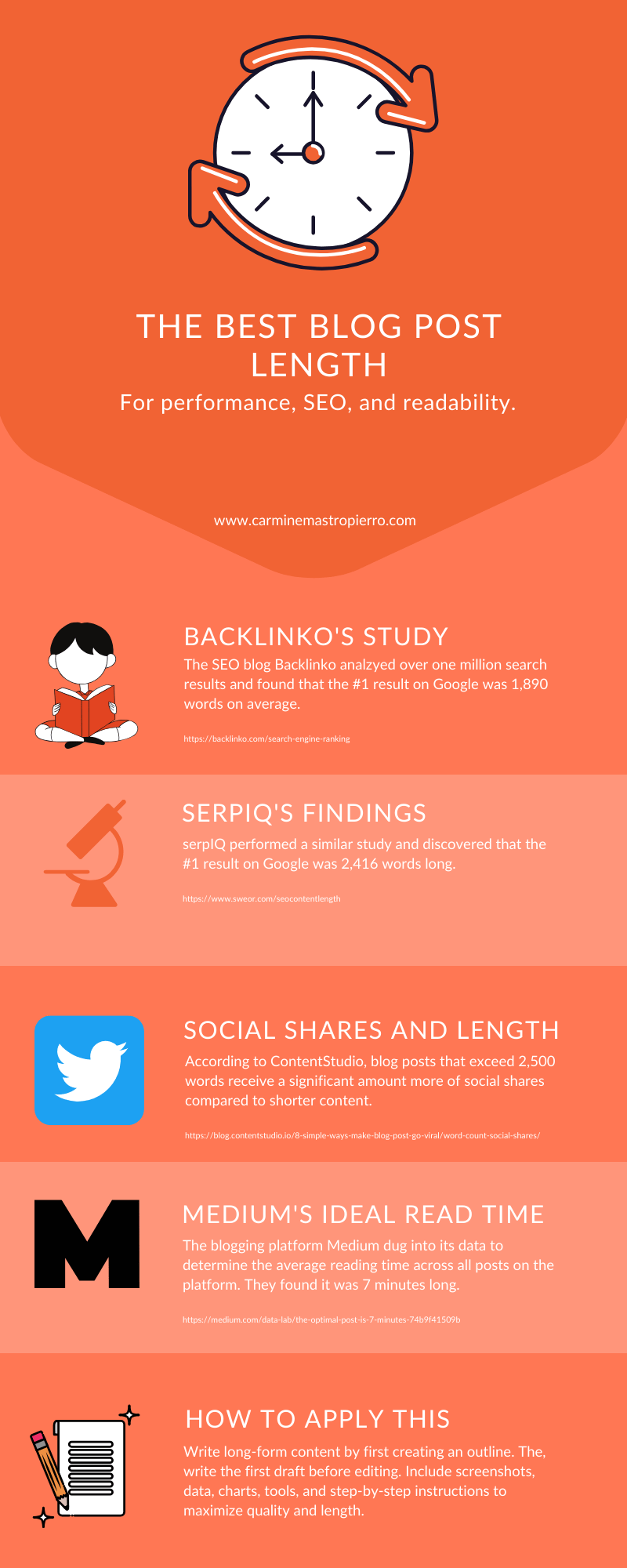500 words, 1,000 words, 2,000 words.
What’s the best blog post length?
It can be difficult to choose how long a blog post should be to rank against competitors and generate organic traffic.
Google uses 200 different ranking factors with 50 variations each, which means they look at over 10,000 different metrics to rank your website!
It’s no secret that word count plays a role in how you will rank in the SERPs, but it’s not universal.
Look at a news or weather website, for example. They use short-form content, but can easily rank on the first page for competitive search terms.
But then if you look at a niche like digital marketing, it’s common to see 3,000 words and beyond for articles.
What gives?
The reality is that there’s no cookie-cutter way to approach the ideal blog post length, as it depends on your industry and competition.
That’s why today I’m going to cover some studies on the best word count for SEO and tips on hitting high word counts.
Try out my blog post idea generator while you’re at it if you need new ideas.
Backlinko’s findings on typical blog post length
Back in 2016, Backlinko analyzed over one million Google search results to see what they could discover about the ranking system.
One of the key findings they concluded was that the average number one result on Google was 1,890 words long.

There are many reasons why marketers believe this is the ideal blog post length for SEO.
Firstly, producing long-form content is known to generate more social shares. This makes content go viral, and signals to Google that it is important, as they do take social links into consideration.
According to ContentStudio, articles that exceed 2,500 words receive a drastic amount of more social shares.
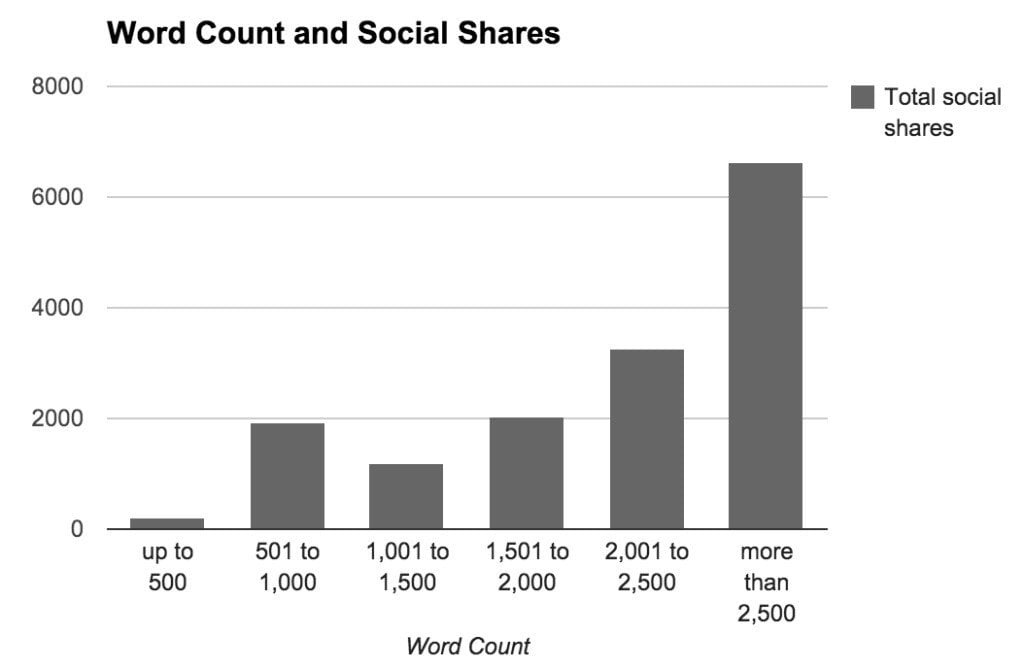
This makes sense.
Longer count packs more value, resources, information, and entertainment.
Hence users are more likely to share with friends and family.
Secondly, longer content helps Google determine what your website is about through topical relevancy. If you have thousands of words covering one topic, the algorithm has more data to play with.
Another thing to consider is that longer content can increase the average time spent on page and lower bounce rate.
Ever since Google released the Rankbrain algorithm a few years ago, they’ve put more weight on these user experience based metrics.
It went live in April of 2015, but it wasn’t until many months later in October that the world heard about it. Sneaky Google 😉
A 1,890-word article would have users staying longer on the page, and potentially get them deeper into the site through internal linking. As a result, this optimum blog post length signals to Google that users are finding it valuable.
SerpIQ’s Study on blog post length
Another interesting study that was performed on the ideal blog post length was done by SerpIQ in 2012. While this was 7 years ago at the time I write this article, the data still holds up.
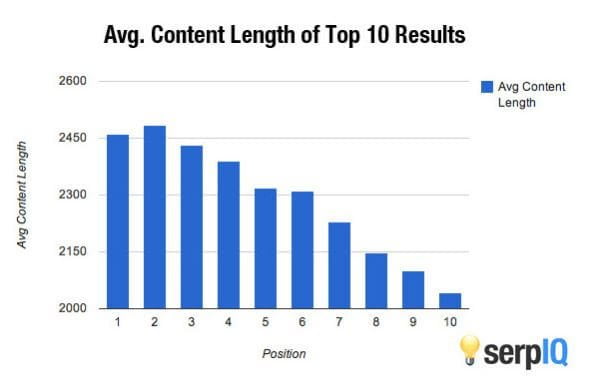
Similar to Backlinko’s study, serpIQ analyzed over 20,000 different keywords in their study.
The results concluded that the top 10 results for these terms were 2,000 words or more. They also discovered that the #1 position was 2,416 words.
Take into consideration this was back in 2012, and the previous Backlinko study was completed in the last couple of years.
This means that the optimal blog post length needed to rank on the first has remained relatively unchanged for 7 years!
With that being said, I’d like to teach you how to write more words easily so you can begin ranking higher on Google.
Medium’s incredible findings
Medium is a blogging platform that set out to find how long a blog post should be.
They dug into their data and concluded that the average total time spent reading across all posts on Medium was seven minutes.

Medium, in particular, displays how long any post on their website will take to read.
If you’re blogging on WordPress (like yours truly) then you don’t have access to a time counter.
Rather, you’re dependant on word count.
And it’s a tricky thing.
A shorter blog post on a complex topic supported by heavy data could take longer to read than a simple long-form piece.
As they say at the end of their study, don’t be too strict about the length of content but keep the averages in mind.
There are many cases in which shorter content outranks longer and vice-versa.
How to write long-form content
I specialize in long-form, data-driven, SEO focused content as a copywriter for hire.
This style of blogging has been able to produce incredible amounts of organic traffic and leads for me and my clients.
However, it’s much easier said than done.
That’s why I want to share my tips for writing long-form content effortlessly with you.
Enjoy 🙂
Quality over quantity
A common mistake marketers make when trying to up their word count is that they add a lot of fluff to content.
Fluff consists of information or resources that don’t relate much to the topic at hand.
You want to avoid this for a couple of reasons.
One: It will negatively impact how Google topically views your website.
Two: Readers will be unimpressed and may be more likely to leave before finishing.
I recommend that you always take the time to edit and proofread content to remove any fluff once you’re finished the first draft.
I’m no saint. I’ve definitely written content for my sites before and didn’t edit it, then eventually got an email suggesting some corrections.
Avoid this by cleaning up and optimizing your writing. A lot of SEO copywriters like to take a break or sleep on their copy if you’d like to take that approach, too.
Read my previous articles on optimizing the writing process and avoiding writer’s block to learn more about becoming a better writer.
Make it practical
The best content tells the reader exactly what to do, extends tools, and offers resources.
That’s why most people are reading content after all, right?
With this in mind, there are a few aspects that I believe every piece of content needs, including:
- Tools
- External links
- Charts
- Graphs
- Case studies
- Statistics
Reflect back on this article, for example. I’ve referenced studies and statistics that make it more actionable for you — the reader.
Despite this seeming rather obvious, there’s an unlimited amount of content on the internet that just sucks.
These articles are blocks of text with no formatting, personality, or real value.
You can tell that the business or writer they hired doesn’t know what they’re doing or wants to push out content for the sake of it.
Avoid that by spending time making your article genuinely useful based on the search intent.
Format it for readability
Nobody reads content these days.
They skim it.
This means that they scroll through looking for headers and different cues that tell them where certain information is.
Think about yourself.
I bet there are times where you land on a website and quickly browse through to find what you need without reading every single word.
In fact, it’s been found that visitors only read 20% of text on any given page.
I recommend that you format content thoroughly to align with this common behavior.
One of the first places to begin is by using headers tags like H1, H2, and H3.
These should be used to break down the major and minor points of an article.
It organizes your thoughts and improves user experience. Win-win!
Here’s an example of what it looks like afterward:
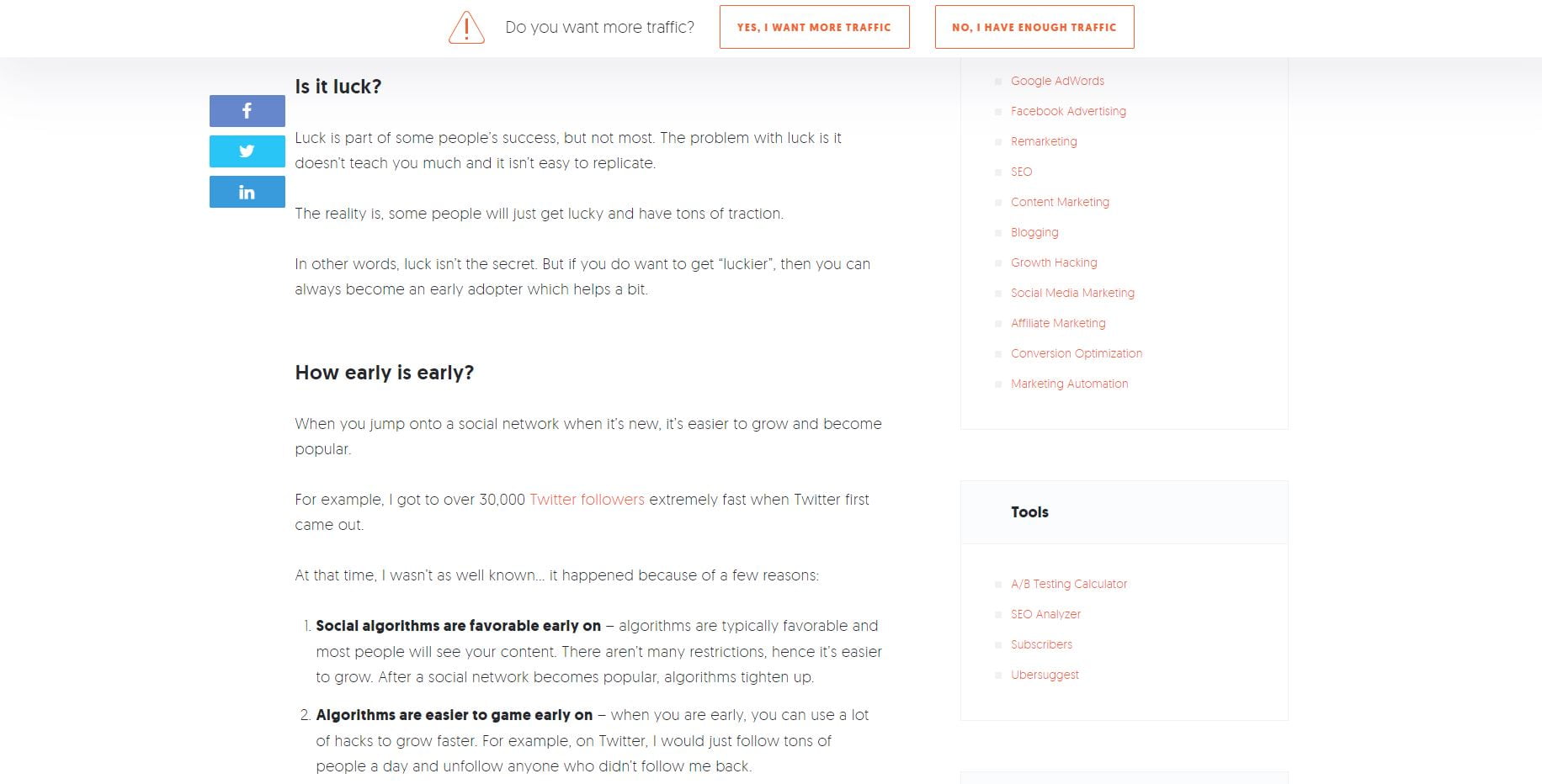
Similarly, bullet points and lists are nice for quickly summing up information or leading readers through different steps.
Images are also good for making content more visually appealing and act as cues for what is being spoken about.
I recommend short sentences and paragraphs, too. You’ll notice that mine never tend to go past one or two sentences.
This makes content much easier to read which is crucial when there are potentially thousands of words.
Plan it out ahead of time
I’ve been professionally writing for about seven years now.
I use to make the error of jumping into writing without any planning or organization.
I didn’t realize how much this was hurting my workflow until I started doing the opposite years later.
Planning out content ahead of time is one of my biggest tips for writing long form content.
Begin by plotting out all of the major and minor points you’d like to cover in the article. It will look something like this:
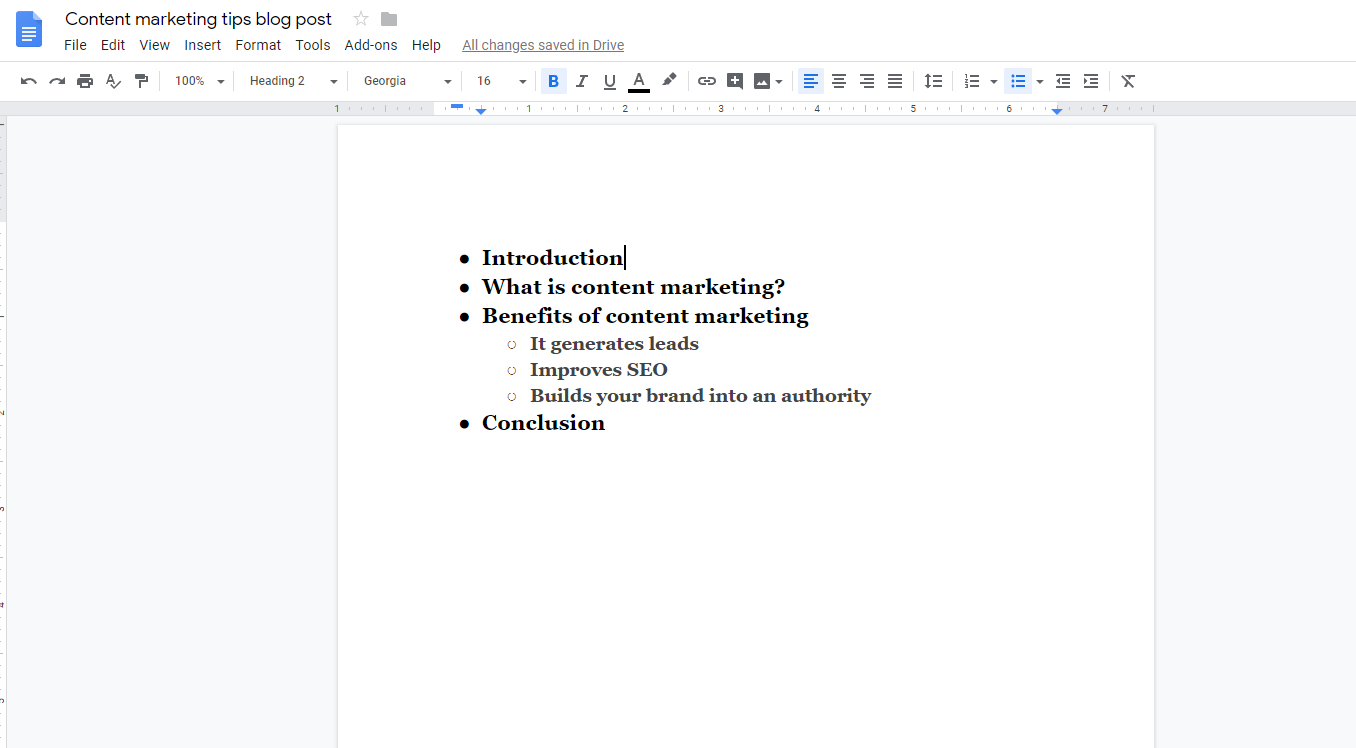
I would then suggest that you begin collecting resources for each of the points you’ve plotted.
It will then look like this after:
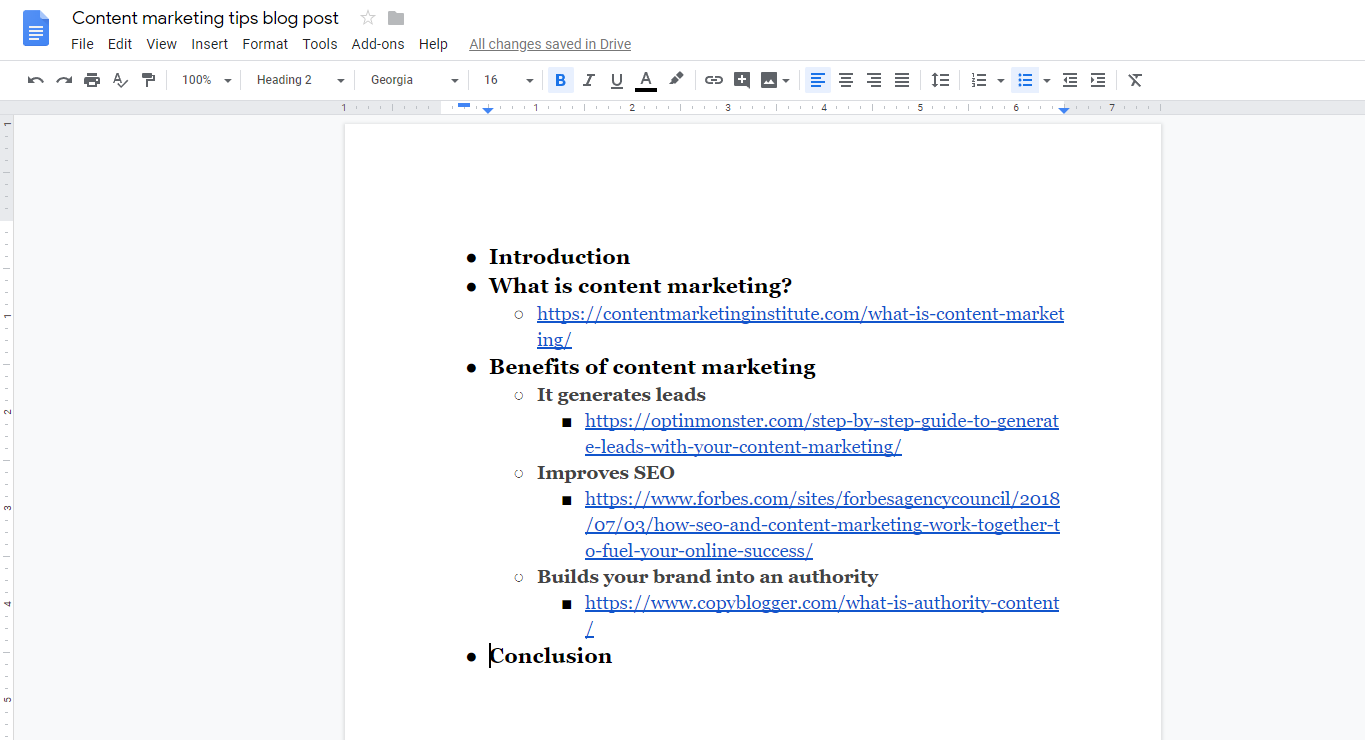
As you begin writing, you already know what to speak about, and you have resources you can use to make the process even smoother.
Think of it as several mini blog posts
Let’s say that you’re writing a 2,000-word blog post and you have ten headers including the intro and conclusion.
That means you will need to write approximately 200 words under every header to hit the ideal blog post word count.
In that case, I like to think of every header as a mini blog post.
This changes your mindset into one where you want to dive deeper into every point you make and allows you to hit a higher word count easier.
Ask yourself this: How can I make something different and meaningful?
This is a question I learned from one of my favourite marketing guru’s, Seth Godin.
I ask it anytime I’m writing content for my own businesses or clients.
There’s so much content on the internet that it’s easy for yours to overlap.
That’s why I personally like to look at the front page of Google for the topic I’m covering and thinking of how I can write something unique.
It can be as simple as using a different tone of voice, suggesting other tools than competitors, or making contrarian statements.
This is a great practice when writing long-form content because you’ll come up with extra ideas to add to the post.
This video is a bit lengthy, but I highly recommend watching it as Seth elaborates on the topic and more:
Spice it up with visuals
A blog post isn’t a newspaper.
That means you need to avoid writing huge blocks of text with no visual relief.
Otherwise, readers will be quick to click the back button on their browser and read something else.
It’s fact that articles with images get 94% more views. 👀
People like it. Search engines like it. We all like it!
But, please (I beg you) avoid stock images. These are cool for featured images and that’s it.
They are bland and everywhere.
Rather, take screenshots of what you’re educating readers about. This adds context and helps them achieve their goal easier.
Look how Backlinko does this in its blog posts to assist readers in completing different steps:

Next, I recommend using graphs and charts to validate claims as I mentioned earlier.
They break up paragraphs and add supporting data.
Source these from other sites, studies, papers, or create them yourself with a tool like Canva.
Depending on your writing style and audience, I also believe gifs and memes have merit in blog writing.
They are a form of communication.
They sum up ideas and jokes within an image. Think of it as an emoji.
Use them sparingly and when the time is right. Ideally they should support the topic and be placed tastefully.
How long should a headline be?
While the length of the article itself is important, the smaller components like the headline also need to be considered.
According to CoSchedule and OutBrain, the best headline length is approximately 16 to 18 words.
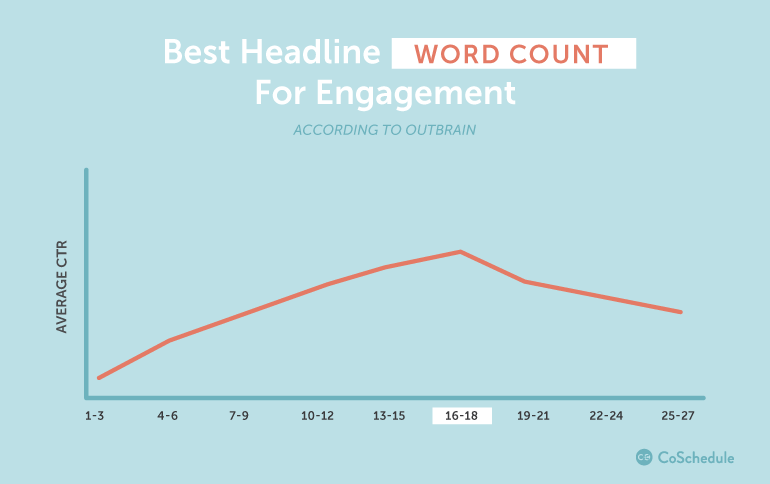
Make sure to read my guide on writing epic headlines so your titles attract more attention and clicks with that being said.
The headline is important because it’s the first thing readers see. If it isn’t enticing or cuts off, they will be less likely to click through and read the actual content.
Famous copywriters like David Ogilvy would say that once you’ve written your headline, you’ve spent 80 cents of your dollar.
How long should a title tag be?
A title tag is commonly the same as the headline used for your blog post but it can be edited to be different if you wish.
Seeing as Google made changes to their results pages so any titles beyond 60 characters become shortened, you will want to squeeze your title tag into this length.
Look at the difference between these two title tags, for example:
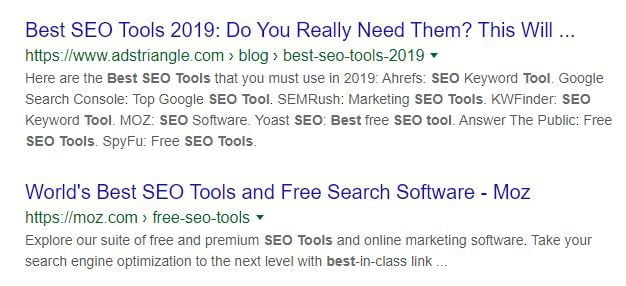
The first is too long and gets truncated while Moz’s is clean and readable. Take notes!
How long should a meta description be?
Meta descriptions are the paragraphs of text found under a search engine result and title tag.
They need to be optimized if you wish to rank higher on Google and what’s one of the most important things to clean up? The word count.
Similar to title tags, Google with truncate a meta description if it goes beyond 150 to 160 characters.
Keep it within this length to make it easier to read for users while summarizing what they will learn in the article.
I also suggest adding a call to action and your main keyword so they feel further enticed to click through.
Final thoughts on how long a blog post should be
The ideal blog post length depends on your exact niche and industry, but long form content is universal.
Looking at the studies I touched on today, it’s safe to say that approximately 2,000-word is a good blog post length.
Long-form content improves SEO performance, increases social shares, and shifts your brand into an authority.
You can achieve a higher word count by first planning out content ahead of time. Map out all of the major and sub-points you’d like to touch on so you have a smoother writing process.
Then, take advantage of header tags, lists, images, and bullet points to make your content digestible.
It’s also key to make it practical and actionable. This means adding tools, resources, and easy-to-understand instructions.
So, what are you waiting around for? Go make some long-form content and see the difference for yourself 🙂
Alternatively, you can learn more about my Toronto SEO and content writing services.
